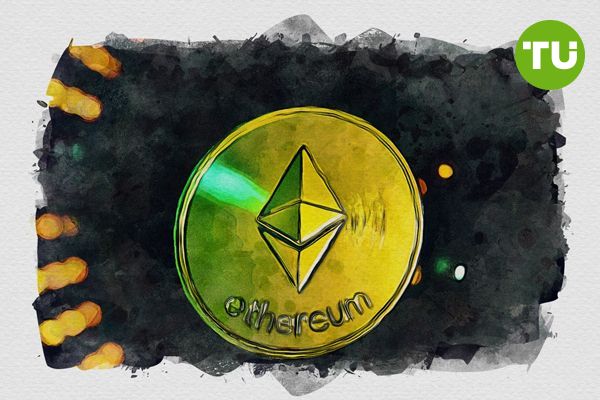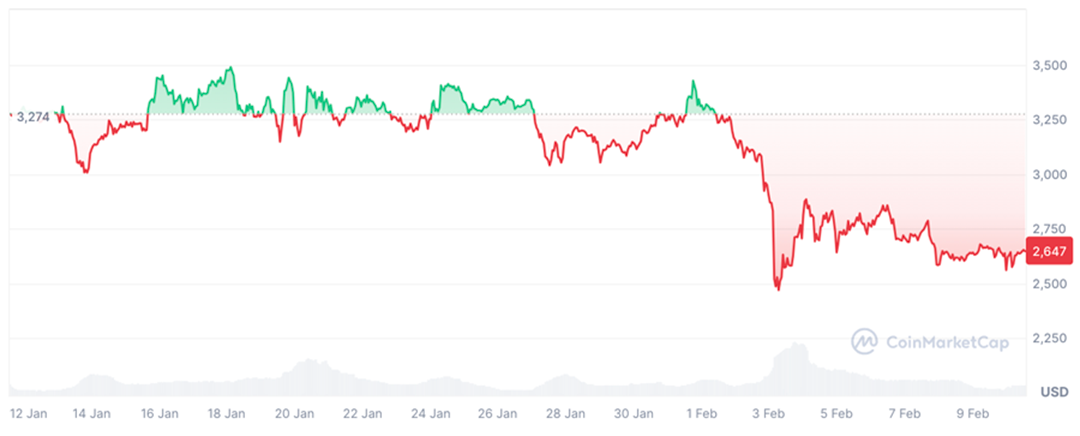Ethereum transaction fees hit five-month low
 Ethereum daily fees drop to a five-month low of $731K amid cooling on-chain activity.
Ethereum daily fees drop to a five-month low of $731K amid cooling on-chain activity.
Daily transaction fees on the Ethereum network have fallen to their lowest level since September 2024, with fees dropping to $731,472 on Feb. 8.
This marks the first time in five months that daily revenue has dipped below $1 million, signaling a notable slowdown in network activity.
Key Takeaways
- Historic Fee Drop: Ethereum generated only $731,472 in daily fees on Feb. 8, a five-month low reminiscent of a similar slump last seen between Aug. 17 and Sept. 8, 2024.
- Rising Supply Pressure: Since April 2024, Ethereum’s supply has been steadily increasing, surpassing pre-Merge levels and reversing the deflationary trend established post-Merge.
- Layer-2 Shifts: The adoption of layer-2 solutions has reduced congestion and fee spikes on Ethereum’s mainchain, but it has also shifted activity off-chain and raised concerns about ecosystem fragmentation.
- Internal and Competitive Challenges: Ongoing internal conflicts at the Ethereum Foundation and rising competition from networks like Tron and Solana add to market uncertainty, despite record inflows from accumulation addresses.
Decline in Daily Fees and Its Implications
On Feb. 8, Ethereum’s daily transaction fees fell to $731,472—its lowest level since September 2024. This dip, which is the first instance in five months of daily fees dropping below the $1 million threshold, mirrors a previous decline experienced between mid-August and early September 2024, with the last comparable event dating back to November 2020. Such a drop suggests a cooling in on-chain activity, potentially driven by reduced network usage or shifting market dynamics.
Loading...
Rising Supply and the Post-Merge Landscape
Despite earlier deflationary measures introduced by the Merge and the London hard fork—which burned a portion of transaction fees—Ethereum’s supply has been on the rise since April 2024. This increase has erased the deflationary benefits previously seen, as the total supply now exceeds pre-Merge levels.

Ethereum price. Source: coinmarketcap.com
The elevated supply, combined with softer fee generation, has disappointed investors who had hoped for renewed upward momentum following the approval of spot ETFs in major markets.
Impact of Layer-2 Scaling and Market Fragmentation
Ethereum’s layer-2 scaling strategy has successfully alleviated mainchain congestion and minimized fee spikes. However, this shift has also diverted a significant amount of activity off the main Ethereum blockchain, leading to concerns over a fragmented ecosystem.
Competitors like Tron and Solana have capitalized on these dynamics, with recent data showing that both networks have edged Ethereum in total fees generated over the past three months.
Internal Conflicts and Market Reactions
Adding to the challenges, internal disputes within the Ethereum Foundation have recently surfaced. In January, co-founder Vitalik Buterin assumed sole leadership amid criticism of executive director Aya Miyaguchi and conflict-of-interest concerns related to paid advisory roles at EigenLayer. Despite these issues, Ethereum bulls remain optimistic, as evidenced by the record accumulation of 330,705 ETH (worth approximately $833 million) on Feb. 7—the largest single-day inflow ever recorded.
Recently we wrote, that hedge funds have significantly increased their bearish positions on Ethereum (ETH), with short bets surging over 40% in the past week and a staggering 500% since November 2024.













































































































































